Today I made a return visit to Johnston Canyon in Banff National Park. It was a warm day and I was escorting Rolande’s nieces and Jon’s fiancé on a walk up the park’s favourite trail. I was glad I brought my camera and so were my companions who also enjoyed the bonus of a great photographic opportunity. The extent of ice and the snow had grown since my last visit earlier this month. The canyon is in top photographic form and today I’ll share a few of my favourites from our walk.
The first two feature an opening in the snow-covered ice on the creek in the bottom of the canyon. The creek is quite shallow at this point and the water is moving swiftly. Very thin patches of ice have grown outward into the stream and you can see where the edges have been both eroded and smoothed by the moving water, creating a lace-like edge. What is most appealing is how these edges catch the light and literally glow against the backdrop of the darks stones on the creek bed.
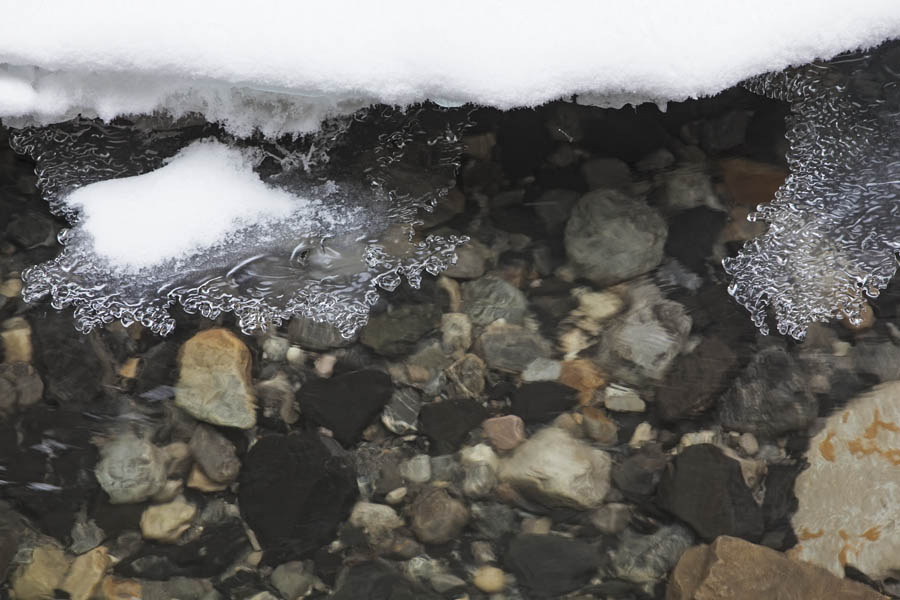
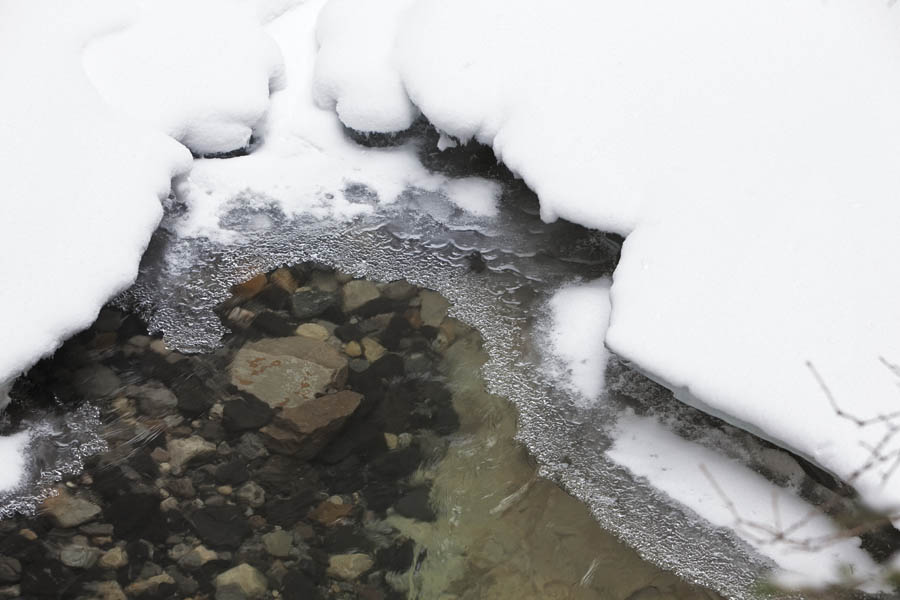
The next picture shows a column of ice that has formed on the wall of the canyon, created by freeze-thaw cycles. The snow on the wall melts in the sunlight on warm days and drips downward, turning to ice as sunlight in the canyon fades and night falls, bringing freezing temperatures. It looks just like the layers of molten wax that solidify on a dripping candle. The same process. There is no creek and no waterfall entering the canyon in this area.
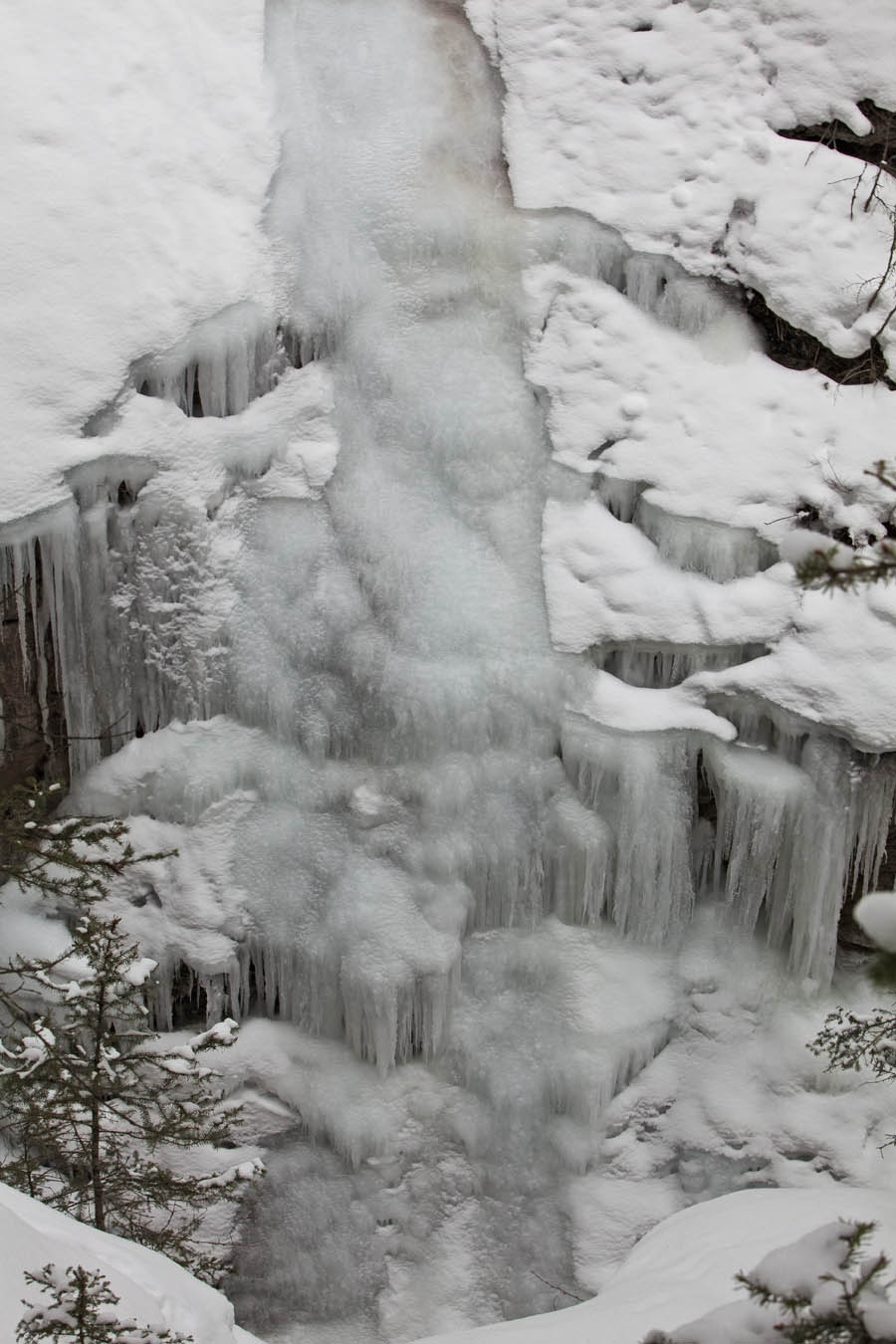
My final two pictures were taken at the Lower Falls on Johnston Creek. The falls are frozen solid but water continues to flow beneath the layer of ice and you can see open water in the pool at the base of the first cascade.
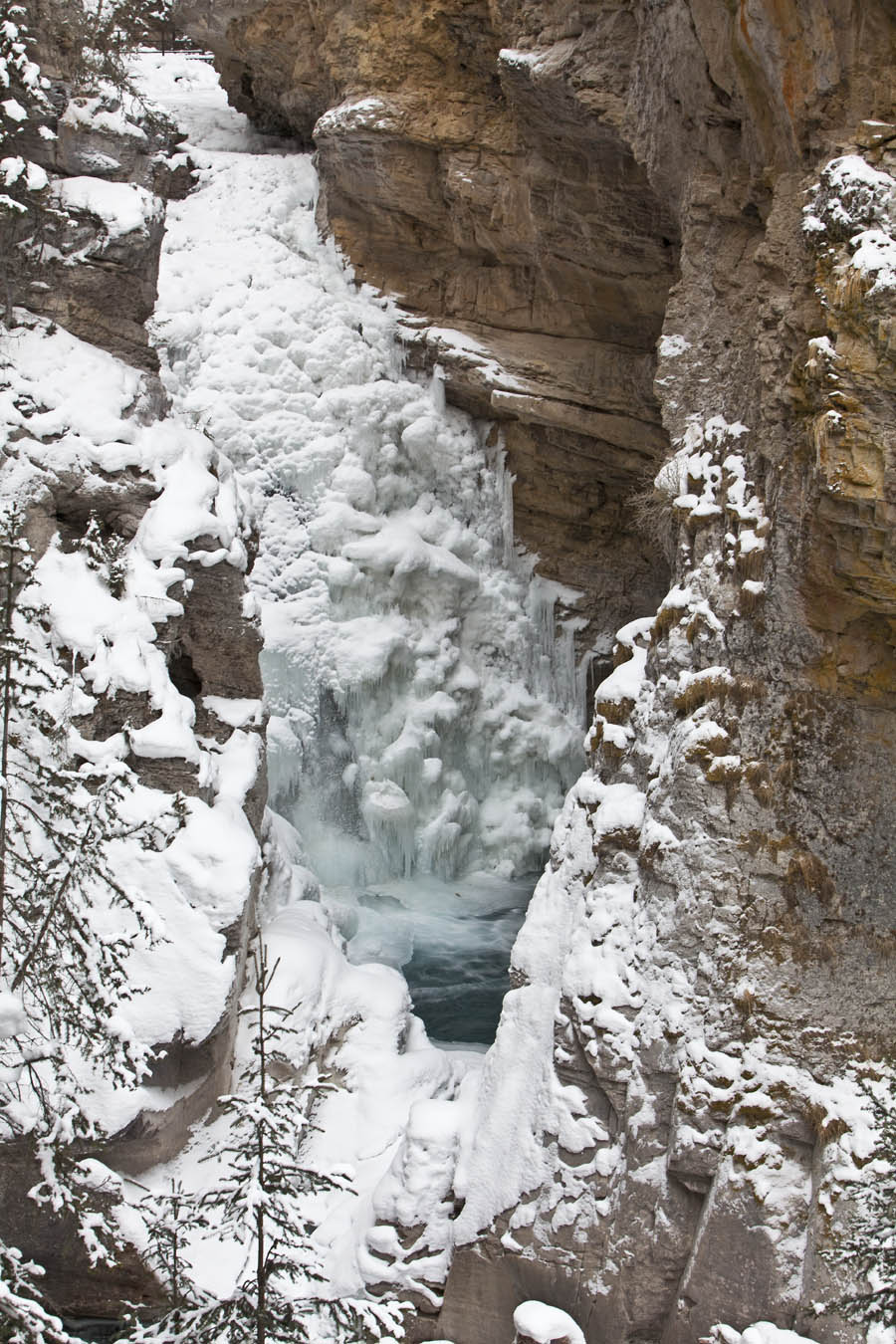
Zooming in more closely, I’ve enlarged the area at the base of the Lower Falls. Again you see freeze-thaw cycle in action, creating layer upon layer of congealed water. On the left side, it looks like the water is penetrating the thin mantle of ice covering the underlying falls. Closer inspection shows that the cascading water has eroded the ice in this area and only a thin layer remains. It’s more like a window and you can see the water moving behind it. The bright spots on this thin layer appear to be air bubbles trapped in the ice. I’d now better if I could get a little closer. Bigger lens next time.
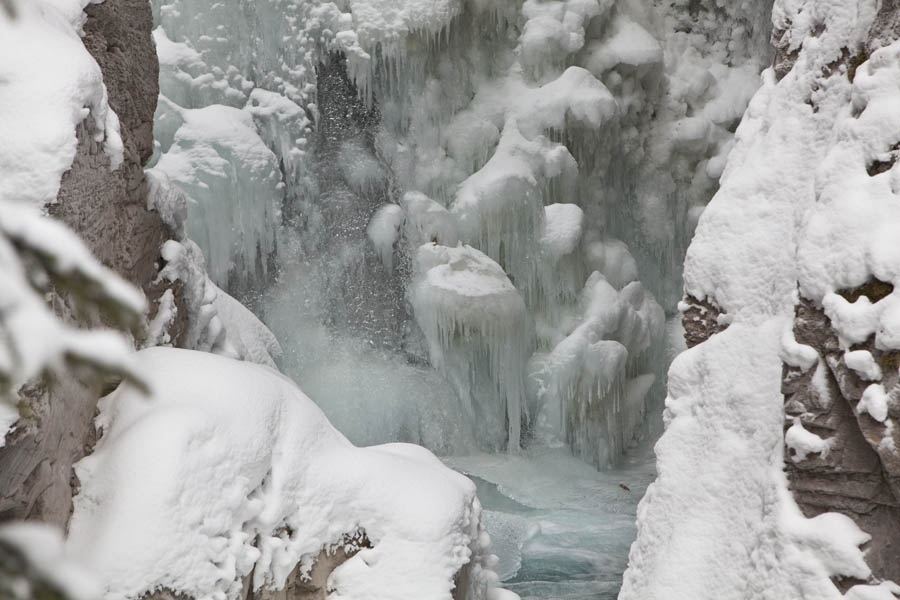
I took all of today’s pictures using a 70-200 mm, f2.8 lens. It’s very versatile, enabling me to vary my images from wider angles to fairly tight close-ups. In this weather, it’s a lot easier to work with a single lens and no tripod. All shots were taken hand-held and I didn’t spend any time changing lens and making fine adjustments. Stay tuned for more winter scenes. We’re expecting some fresh snow soon, always welcome for winter photography.
